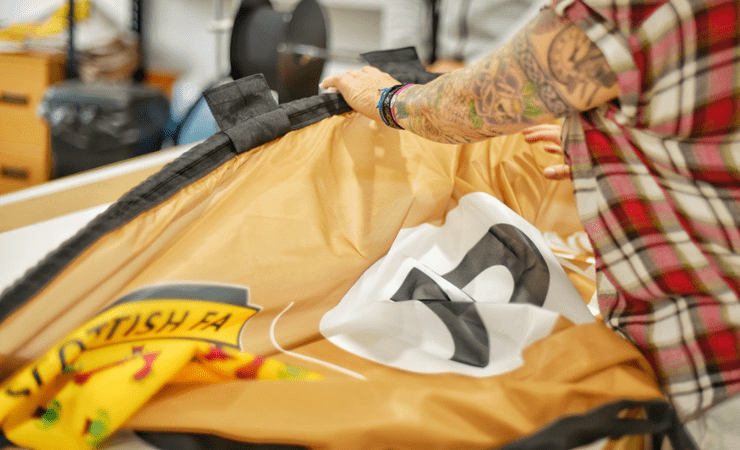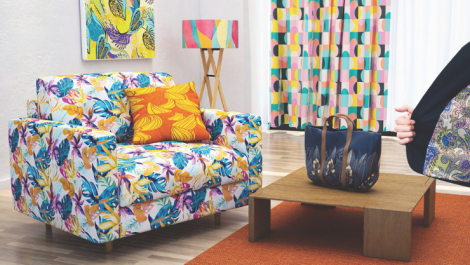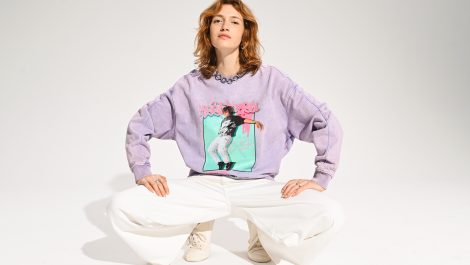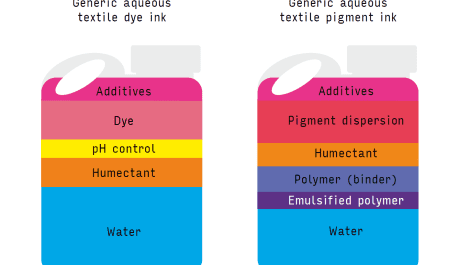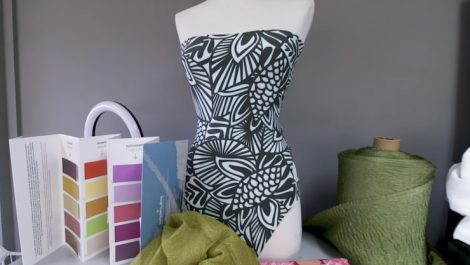Digital Textile Printer talks to Venture Banners’ Scott Conway about current trends in textile print for display.
In the ever-evolving world of wide-format print, one substrate is rapidly redefining what is possible: textile. Once reserved for specialist applications, textile-based soft signage is now taking centre stage — lighter, greener, and more versatile than its PVC-based predecessors. But beyond the hype, what is driving this shift? And what does it mean for printers already stretched by rising costs, tighter margins, and the demand for sustainable solutions from their customers?
“Textile, textile, and more textile,” says Scott Conway, director and co-founder of Venture Banners, summing up the current trend that the company is seeing in the sector. His enthusiasm is backed up by the data – textiles now account for around 40% of the company’s overall sales, a proportion that continues to grow.
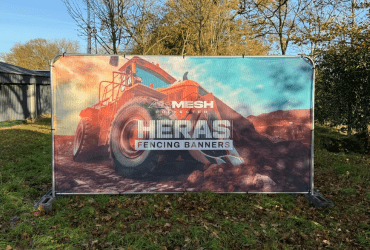
AirMesh Polyester offers customers benefits in reuse and transportability
The growing adoption of textiles in signage represents a change in customer values. Increasingly customers are looking for signage solutions that do not just perform well, but also align with goals around sustainability, innovation and practicality. Fabric meets those demands on multiple fronts — and it is not just about the environment.
“Textile signage products such as display/stretch polyester for both silicone edge graphics (SEG) and stretch frames, as well as backlit polyester lightboxes, offer vibrant and high-quality prints that don’t crease during transportation, are lightweight to transport, and are washable and reusable,” Mr Conway explains.
That combination of quality visuals, portability, and reusability makes fabric signage an appealing choice for sectors as diverse as retail, exhibitions, events, and hospitality. The growth of soft signage is happening at the convergence of commercial common sense and sustainability pressure.
The infrastructure behind the fabric
But transitioning to textiles is not as simple as switching substrates. The production demands — from hardware to finishing — are significant, particularly at scale.
“In May 2024, we expanded our textile capabilities with the investment of an EFI FabriVU 340i – with in-line fixation, as well as expanding our sewing department to meet this demand,” says Mr Conway. That followed an earlier investment in an EFI FabriVU 340 and Klieverik calender unit back in 2018.
While the creative and commercial opportunities are real, the reality for print providers considering a shift to soft signage is that it requires proper planning and capacity. For many PSPs, that may mean outsourcing textile work to trade print partners rather than investing directly in specialist equipment — at least in the short term.
And that is where Venture Banners is aiming to support the industry, having positioned itself as a ready-made production engine for printers looking to expand into fabric without the overhead.
A sustainable solution
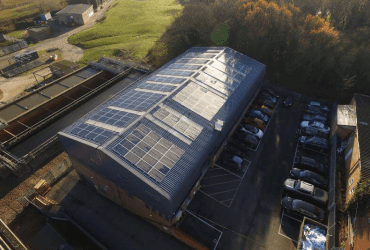
Venture Banners’ commitment to sustainability includes their own solar power generation.
Environmental responsibility has become a defining factor for procurement teams and agencies alike. But while fabric is widely viewed as a greener option than PVC or vinyl, sustainability is not a one-size its-all metric — and cost still plays a role in adoption.
“With the rise in sustainability concerns, a large factor in the growth in demand we are seeing for textile products is certainly the reusability and versatility they offer, making them an ideal alternative to single-use signage materials,” says Mr Conway.
Earlier this year, Venture Banners launched a new textile substrate — AirMesh polyester — designed as a more sustainable alternative to traditional PVC mesh banners. “It’s a perforated textile that is suitable for all kinds of outdoor and indoor products,” explains Mr Conway. “AirMesh Polyester is an incredibly versatile material that can be washed, reused, and easily transported.
While polyester may not be as sustainable as natural materials, its reuse and recyclability earn it eco-bonus points. But it is not just what it is made of that makes textiles sustainable.
Stretching product lifespan
The sustainability benefits of textiles do not just lie in the materials themselves — it is also about how they’re used. Replacing whole display systems for every new campaign is both expensive and wasteful. Replacing just the graphics? A far smarter approach.
“Rather than ordering a completely new signage system, replacement graphics can be a way to extend the lifecycle of existing hardware, whilst saving money and reducing the impact on the environment,” Mr Conway says.
To illustrate the benefits of this philosophy, Venture Banners supplies all necessary fittings with each replacement graphic to ensure compatibility with existing display systems and even offers shell transformer frame hire for events. This enables brands to refresh messaging without replacing the complete signage system. It is a compelling model for circular signage — one that could increasingly become standard across the sector, and is explored further in our “Display smart” feature on page 19.
Streamlining the workflow
As production volumes rise and lead times shrink, automation and workflow efficiency are becoming just as critical as print quality or substrate selection. To manage the growing pressure placed on the workflow by these challenges, and the increased demand for services such as web-to-print, businesses are investing in high-tech systems to simplify the process and improve the customer experience.
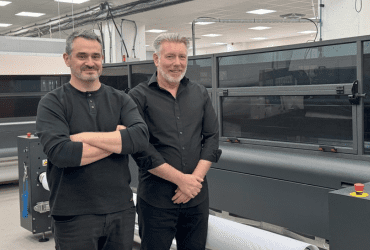
Venture Banners’ co-founders and directors Wayne Bodimeade (left) and Scott Conway
“We have been working very closely with [pre-press software] Artworker to enhance our artwork processing… [creating] an API which enables cloud-based artwork processing,” Mr Conway explains. “We plan to integrate this feature into our checkout process to streamline this stage of production, enabling us to offer even quicker turnaround times.”
While not specific to textile print, this investment reflects a larger shift in the print industry: the future will not be driven by print quality alone, but by end-to-end efficiency, from quoting and proofing to final dispatch.
Time to switch?
Soft signage is not just having a moment — it is establishing itself as a permanent, profitable, and practical pillar of large-format print. But is not without its complexities. From investment to education, supply to finishing, textiles bring their own learning curve.
That said, printers do not have to go at it alone. Trade specialists like Venture Banners are helping bridge the gap for PSPs who want to test the waters — or expand their offering — without going all in on infrastructure.
For those watching from the sidelines, the question is not whether fabric has a future in signage. It is how can organisations integrate it into their business model.

